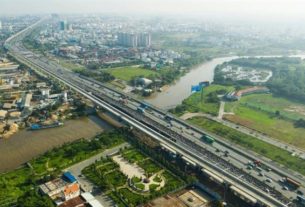Solar power here would climb to 150 megawatts by year-end from 60MW at present, Krairit Nilkooha, director-general of the Alternative Energy Development and Efficiency Department, told the third meeting of the two-day Asia Solar Energy Forum in Bangkok yesterday.
Bangchak Petroleum’s 38MW and Natural Energy Development (NED)’s 55MW solar farms are scheduled to go online by the end of this year. Next year NED’s capacity will be raised to 73MW.
Both projects are supported by the Asian Development Bank, which hosted the event.
“Solar energy applications have a combined capacity of 3.3 gigawatts, and developers of over 2GW have already signed power purchase agreements with power utilities. The Energy Ministry is closely monitoring how many of these projects will actually be get off the ground,” Krairit said.
Due to the huge projects, the Energy Regulatory Commission is studying the introduction of a feed-in tariff of Bt6.50 per unit for solar power to replace the Bt8-per-unit “adder”.
Bangchak president Anusorn Sangnimnuan hopes that the new government would raise the feed-in tariff to Bt7-Bt7.50 to ensure that the internal rate of return would be a reasonable 13 per cent.
Such actions are necessary if the government really wants to push for 2.5GW of solar power in 15 years, up drastically from the original target of 500MW. The new target should help reduce fossil fuel imports by Bt10 billion and carbon emissions by 500,000 tonnes per year. Eventually, sourcing more solar energy would help Thailand cope with the delayed construction of nuclear power plants.
Siam Commercial Bank, Kasikornbank and Bangkok Bank are bullish on the industry outlook and showed their readiness to provide financial solutions.
Along with the opportunities are risks, such as the possibility that most of the developers, say 80 per cent, do not proceed with their plans, which could jeopardise the conditions of the committed developers.
While ready to help finance the potential projects, the banks said “screening” for committed and sound projects is obligatory.
Xiaoyu Zhao, a ADB vice president, said Asia has to expand solar energy to fuel its dynamic economic expansion and reduce carbon emissions.
“Asia could account for half of global output, trade and investment by 2050,” he said.
“To sustain its impressive growth momentum, Asia must manage its energy security and innovate away from the traditional, high-resource, high-car?bon development path toward sustainable, low-carbon growth.”
Less than 0.25 per cent of Asia’s electricity comes from the sun. Pointing to the significant potential, Zhao said the aim is to increase that contribution to 3-5 per cent in the near future.
The ultimate goal of the Asia Solar Energy initiative is to provide solar energy at a cost equal to, or lower than, electricity from the grid.
The region’s solar-based electricity production capacity is about 500MW. Through ADB’s Asia Solar Energy Initiative, this will be multiplied six-fold to 3GW within three years. This level would still represent less than 0.5 per cent of Asia’s total electricity generation.
Last year, ADB invested US$1.8 billion in clean energy, exceeding its $1 billion target for the third year in a row. In 2013, the target will rise to $2 billion a year.
Source: The Nation (Thailand)


